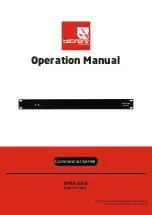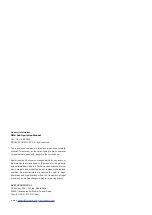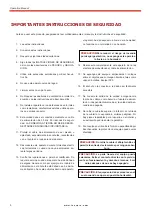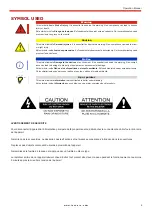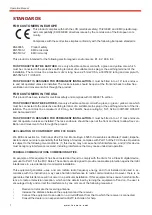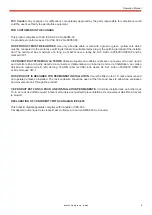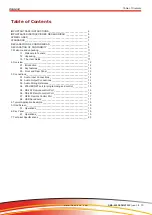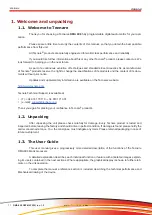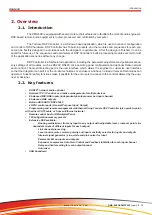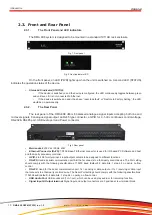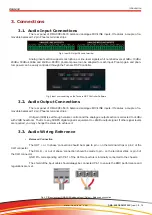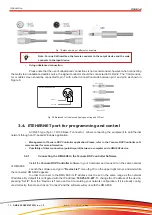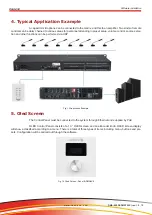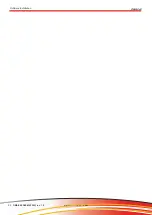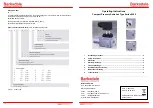
12
Introduction
w w w . t e c n a r e . c o m
DMA-8X8 DSP MATRIX | rev.:1.0
DMA-8X8
2. Overview
2.1. Introduction
The DMA 8X8 is equipped with several core technical features to facilitate the work of audio engineers.
DSP-based remote audio equipment is routed, processed and controlled by computer.
The Tecnare DSP Controller is a Windows-based application, which is used to conduct configuration
and control of DSP hardware. DSP Controller has 16 built-in presets, and the modules and sequences for each pre-
set can be flexibly designed in accordance with the designer’s requirements. After the design is finished, it can be
saved for future use. The sequences and parameters of DSP Controller’s built-in processing modules accord to most
of the application scenarios without any change.
DSP Controller is a full-featured application, including the parameter adjustment and peripheral acces-
sory settings of all modules, such as RS232, RS485, click-and-drag panel configuration and optional Dante network
audio control. The most interesting part is the user interface, which allows the engineer to customize user interface
so that the Integrator can edit it or the on-site technicians or end users who have no idea of relevant techniques can
operate it. Superior safety functions make it possible for the end users to access to the controls allowed by the engi-
neer or designer.
2.2. Key features
• DANTE
®
network audio optional
• Network TCP / IP control, can realize management of multiple devices
• 8 balanced MIC/LINE inputs (independent phantom power per input channel)
• 8 balanced LINE outputs
• Built-in ADI SHARC DSP 21489
• 4 GPIO control ports (General Purpose Input / Output)
• Programming and remote management via Ethernet Using Tecnare DSP Controller (also point-to-point,
with a direct CAT5 cable, or from an Ethernet network)
• Remote control bus for DMA digital Panel
•
16 Configuration memory presets
• Extensive DSP available:
◦
Routing matrix/mixer, from any input to any output with adjustable level, crossover points (in
-
dependent mixes of different inputs for each output)
◦
Link channel processing
◦
Level control, muter, meters, polarity and input sensitivity selector for inputs and outputs
◦
Internal signal generator ( sine, white and pink noise) for input
◦
Parametric EQ on inputs and outputs
◦
Expander, compressor, Auto Gain Control and Feedback Inhibition for each input channel
◦
Delay and limiter setting for each output channel
◦
Automixer
• USB Soundcard

